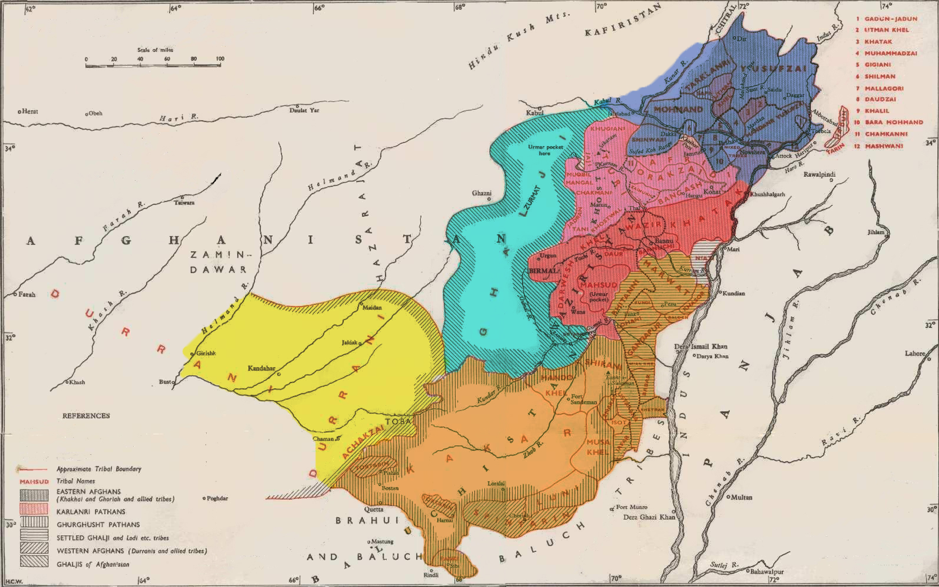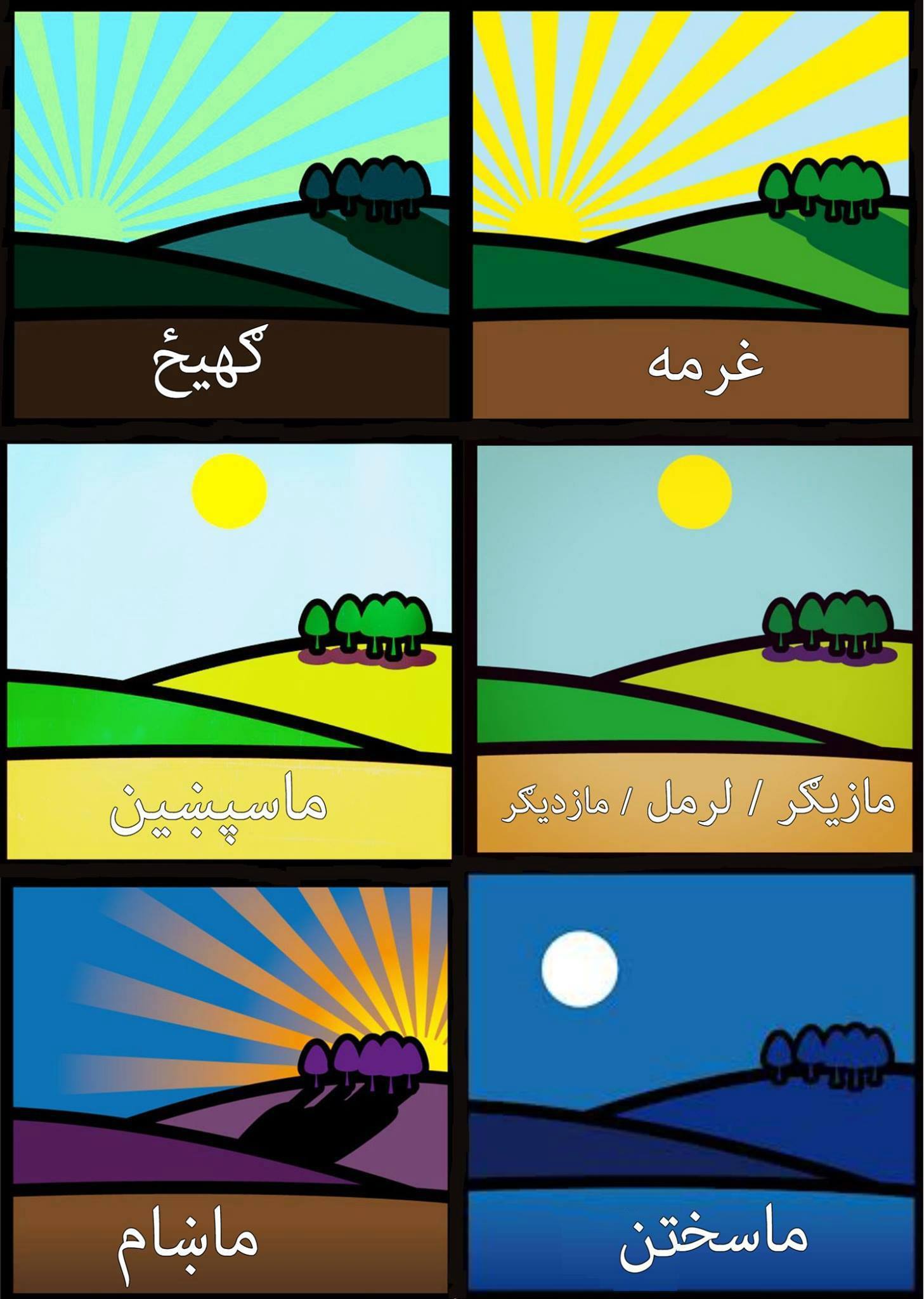|
Waneci
Waṇetsi ( wne, وڼېڅي), commonly called Tarīno ( wne, links=no, ترينو), and sometimes Tsalgari ( wne, links=no, څلګري), is a distinct variety of Pashto and is considered by some to be a different language. In some cases, Wanetsi rather shares similarities with the Pamir language of Munji, showing to be something of a bridge between the former and Pashto. It is perhaps a representation for a more archaic, or very early, form of Pashto. It is spoken by the Spin Tareen tribe in Pakistan and Afghanistan, primarily in Harnai (هرنای) (Harnai District) and Chawter (چوتېر) area in Sanjawi, Northern Balochistan, Pakistan. The Tarīno or Waṇetsi is at risk due to lack of attention. History Professor Prods Oktor Skjærvø states: According to Encyclopædia Iranica Waṇetsi branched off from the other Pashto dialects in the Middle Iranian stage: Research The first known linguistic research was conducted in 1929 by Georg Morgenstierne on Waṇe ... [...More Info...] [...Related Items...] OR: [Wikipedia] [Google] [Baidu] |
Pashto Dialects
Pashto dialects ( ps, د پښتو ژبګوټي də Pəx̌tó žәbgóṭi) can be divided into two large varieties: Northern Pashto and Southern Pashto. Each of the two varieties of Pashto is further divided into a number of dialects. Northern Pashto is spoken in eastern Afghanistan, and central, northern and eastern Khyber Pakhtunkhwa (including Peshawar). Southern Pashto is spoken to the south of it, in southern and western Afghanistan (including Kandahar), southern Khyber Pakhtunkhwa and northern Balochistan (including Quetta). ' Ethnologue' divides Pashto into Northern, Southern and Central Pashto, and Wanetsi. Overview According to David Neil MacKenzie , a consonant shift took place in the northern parts of Pashtunistan in several phases in the medieval era. During the shift, the retroflex fricative ''ṣ̌'' changed to ''x̌'' or to ''x'' , while ''ẓ̌'' changed to ''ǵ'' or to ''g'' . That is supported by the linguist Georg Morgenstierne's assertion that the P ... [...More Info...] [...Related Items...] OR: [Wikipedia] [Google] [Baidu] |
Sanjawi Tehsil
Sanjawi Tehsil ( ps, سنځاوۍ; pronounced Sanzāwə́i locally) is an administrative subdivision (tehsil) of Ziarat District in the Balochistan province of Pakistan. The tehsil is administratively subdivided into five Union Councils and is headquartered at the city of Sanjawi. Majority of the population belongs to Dummar tribe, a sub cast of Kakars. Along Dummars, other tribes settled are Tareen, Pechi, Zakhpel, Nasar, Dumars, Kharoti, Sayyeds and Andarh. Pashto is the lingua franca. , a unique and archaic dialect of |
Harnai District
Harnai ( bal, ہرنائ, ps, هرنای, ur, ) is a district A district is a type of administrative division that, in some countries, is managed by the local government. Across the world, areas known as "districts" vary greatly in size, spanning regions or county, counties, several municipality, municipa ... in the north-east of Balochistan (Pakistan), Balochistan province of Pakistan. Harnai is the principal town of this district and serves as its capital. The predominant first language is Pashto. Wanetsi or Tarino, a unique and archaic dialect of Pashto, is spoken in the district.Hallberg, Daniel G. 1992. ''Pashto, Waneci, Ormuri''. Sociolinguistic Survey of Northern Pakistan, 4. History The name Harnai refers to an influential Hindu personality, Harnam Das, supposed founder of Harnai town, the capital of Harnai District. The town is quite close to Loralai, Ziarat, Sibi, and Quetta. Harnai is surrounded by imposing hills on all sides. The encircling hill ranges have the ... [...More Info...] [...Related Items...] OR: [Wikipedia] [Google] [Baidu] |
Pashto Language
Pashto (,; , ) is an Eastern Iranian language in the Indo-European language family. It is known in historical Persian literature as Afghani (). Spoken as a native language mostly by ethnic Pashtuns, it is one of the two official languages of Afghanistan alongside Dari, Constitution of Afghanistan �''Chapter 1 The State, Article 16 (Languages) and Article 20 (Anthem)''/ref> and it is the second-largest provincial language of Pakistan, spoken mainly in Khyber Pakhtunkhwa and the northern districts of Balochistan. Likewise, it is the primary language of the Pashtun diaspora around the world. The total number of Pashto-speakers is at least 40 million, (40 million) although some estimates place it as high as 60 million. Pashto is "one of the primary markers of ethnic identity" amongst Pashtuns. Geographic distribution A national language of Afghanistan, Pashto is primarily spoken in the east, south, and southwest, but also in some northern and western parts of the countr ... [...More Info...] [...Related Items...] OR: [Wikipedia] [Google] [Baidu] |
Balochistan
Balochistan ( ; bal, بلۏچستان; also romanised as Baluchistan and Baluchestan) is a historical region in Western and South Asia, located in the Iranian plateau's far southeast and bordering the Indian Plate and the Arabian Sea coastline. This arid region of desert and mountains is primarily populated by ethnic Baloch people. The Balochistan region is split between three countries: Iran, Afghanistan and Pakistan. Administratively it comprises the Pakistani province of Balochistan, the Iranian province of Sistan and Baluchestan, and the southern areas of Afghanistan, which include Nimruz Province, Nimruz, Helmand Province, Helmand and Kandahar Province, Kandahar provinces. It borders the Pashtunistan region to the north, Sindh and Punjab region, Punjab to the east, and Geography of Iran, Iranian regions to the west. Its southern coastline, including the Makran Coast, is washed by the Arabian Sea, in particular by its western part, the Gulf of Oman. Etymology The ... [...More Info...] [...Related Items...] OR: [Wikipedia] [Google] [Baidu] |
Tarin Tribe
The Tareen (or Tarin) ( ps, ترین) is a Pashtun tribe inhabiting southern Afghanistan, and western region of Pakistan.Caroe O. ''The Pathans 550 B.C.- A.D. 1957'' Oxford University Press . Page 521.Muhammad Hyat Khan, "Hayat i Afghan" (Orig. in Persian 1865) trans. by Priestley H. B. "Afghanistan and its Inhabitants", 1874; Reprint Lahore: Sang i Meel Press, 1981 History Much of the tribe continues to live in their native lands in the southern parts of Afghanistan and Pishin in Baluchistan, Pakistan."Panni 1969" During the reign of the Mughal emperor Shah Jahan (1628 to 1658) a group of Tareen/Tarin emigrated to the area which is now the Hazara area of Khyber Pakhtunkhwa province of Pakistan.''Hazara District Gazetteer'' 1883 and 1907. The Tareen Chiefs resisted the Sikh occupation of Hazara region which resulted in their properties/ land being usurped by Sikh armies. Branches (Clans) According to Ni'mat Allah al-Harawi in ''History of the Afghans'', Tareen had three sons n ... [...More Info...] [...Related Items...] OR: [Wikipedia] [Google] [Baidu] |
Labial Consonant
Labial consonants are consonants in which one or both lips are the active articulator. The two common labial articulations are bilabials, articulated using both lips, and labiodentals, articulated with the lower lip against the upper teeth, both of which are present in English. A third labial articulation is dentolabials, articulated with the upper lip against the lower teeth (the reverse of labiodental), normally only found in pathological speech. Generally precluded are linguolabials, in which the tip of the tongue contacts the posterior side of the upper lip, making them coronals, though sometimes, they behave as labial consonants. The most common distribution between bilabials and labiodentals is the English one, in which the nasal and the stops, , , and , are bilabial and the fricatives, , and , are labiodental. The voiceless bilabial fricative, voiced bilabial fricative, and the bilabial approximant do not exist as the primary realizations of any sounds in Engl ... [...More Info...] [...Related Items...] OR: [Wikipedia] [Google] [Baidu] |
Alveolar Consonant
Alveolar (; UK also ) consonants are place of articulation, articulated with the tongue against or close to the superior alveolar ridge, which is called that because it contains the Dental alveolus, alveoli (the sockets) of the upper teeth. Alveolar consonants may be articulated with the tip of the tongue (the apical consonants), as in English, or with the flat of the tongue just above the tip (the "blade" of the tongue; called laminal consonants), as in French and Spanish. The International Phonetic Alphabet (IPA) does not have separate symbols for the alveolar consonants. Rather, the same symbol is used for all Coronal consonant, coronal places of articulation that are not Palatalization (phonetics), palatalized like English Palato-alveolar consonant, palato-alveolar ''sh'', or retroflex. To disambiguate, the ''bridge'' (, ''etc.'') may be used for a dental consonant, or the retracted (phonetics), under-bar (, ''etc.'') may be used for the postalveolar consonant, postalveolars. ... [...More Info...] [...Related Items...] OR: [Wikipedia] [Google] [Baidu] |
Denti-alveolar Consonant
In linguistics, a denti-alveolar consonant or dento-alveolar consonant is a consonant that is articulated with a flat tongue against the alveolar ridge and the upper teeth, such as and in languages such as French, Italian and Spanish. That is, a denti-alveolar consonant is (pre)alveolar and laminal A laminal consonant is a phone (speech sound) produced by obstructing the air passage with the blade of the tongue, the flat top front surface just behind the tip of the tongue in contact with upper lip, teeth, alveolar ridge, to possibly, as ... rather than purely dental. Although denti-alveolar consonants are often labeled as " dental" because only the forward contact with the teeth is visible, the point of contact of the tongue that is farthest back is most relevant, as it defines the maximum acoustic space of resonance and gives a characteristic sound to a consonant. In French, the contact that is the farthest back is alveolar or sometimes slightly pre-alveolar. In Spa ... [...More Info...] [...Related Items...] OR: [Wikipedia] [Google] [Baidu] |
Retroflex Consonant
A retroflex ( /ˈɹɛtʃɹoːflɛks/), apico-domal ( /əpɪkoːˈdɔmɪnəl/), or cacuminal () consonant is a coronal consonant where the tongue has a flat, concave, or even curled shape, and is articulated between the alveolar ridge and the hard palate. They are sometimes referred to as cerebral consonants—especially in Indology. The Latin-derived word ''retroflex'' means "bent back"; some retroflex consonants are pronounced with the tongue fully curled back so that articulation involves the underside of the tongue tip (subapical). These sounds are sometimes described as "true" retroflex consonants. However, retroflexes are commonly taken to include other consonants having a similar place of articulation without such extreme curling of the tongue; these may be articulated with the tongue tip ( apical) or the tongue blade (laminal). Types Retroflex consonants, like other coronal consonants, come in several varieties, depending on the shape of the tongue. The tongue may b ... [...More Info...] [...Related Items...] OR: [Wikipedia] [Google] [Baidu] |


